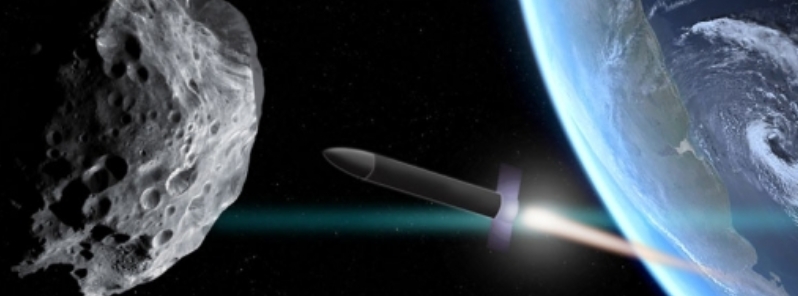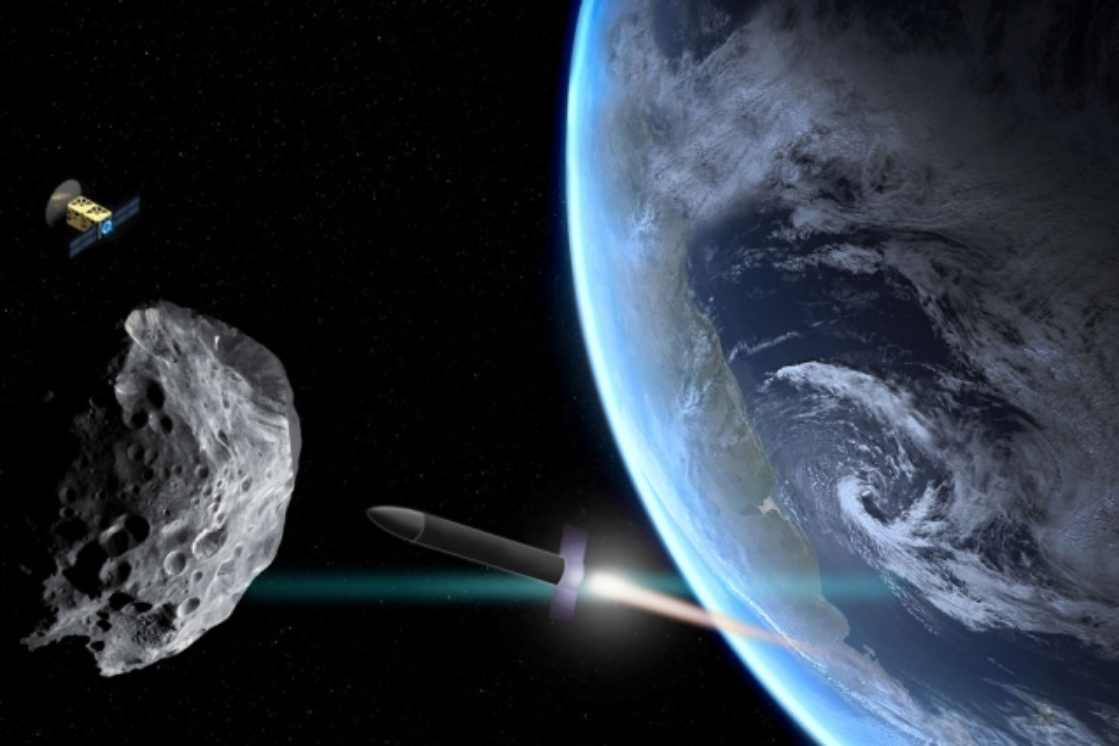MIT presents framework for planning and assessing multi-spacecraft asteroid deflection campaigns

Researchers from the Massachusetts Institute of Technology (MIT) have developed a system that could identify the best possible method to deflect an asteroid long before the situation becomes worse.
The team, led by former MIT graduate student Sung Wook Paek described a "decision map" which takes into consideration an asteroid's mass, momentum, proximity to a gravitational 'keyhole', and the period of warning time scientists have before an impending crash.
In addition, the map details three different choices in terms of how to deflect an upcoming asteroid: first, launch a projectile at it to change its course; second, send a scout first to gather accurate measurements to inform the best possible development of projectile; third, send two scouts to acquire measurements and potentially nudge the object with a propulsion, setting it up for an easier knockout.
The major factor in the model is time, based on simulations conducted using asteroids Apophis and Bennu, also including the locations of their gravitational keyholes in proximity to Earth.
The results showed that with five or more years, the best course would be to send two scouts and the projectile.
Between two and five years out, the single scout followed by a projectile launched from Earth is most likely to be successful. However, with less than one year of notice, it is unlikely to succeed as it may be too late.
"Even a main impactor may not be able to reach the asteroid within this timeframe," said Paek.
With the team's new simulation tool, Paek aims to estimate the success of other deflection missions someday.
"Instead of changing the size of a projectile, we may be able to change the number of launches and send up multiple smaller spacecraft to collide with an asteroid, one by one. Or we could launch projectiles from the moon or use defunct satellites as kinetic impactors," he said.

Image credit: Christine Daniloff, MIT
Reference
"Optimization and decision-making framework for multi-staged asteroid deflection campaigns under epistemic uncertainties" – Sung, W.P. et al. – Science Direct – https://doi.org/10.1016/j.actaastro.2019.10.042
Abstract
In this study, we introduce a framework for planning and assessing multi-spacecraft asteroid deflection campaigns. In the scenario considered, a near-Earth asteroid (NEA) is nudged away from gravitational keyholes via a kinetic impactor (KI) technique, lest its passage should incur an Earth collision in the future. An asteroid orbiter or/and an impactor is/are used in the precursor stage to obtain uncertain information about the target asteroid, whose launch date and trajectory are optimized using Chebyshev's method and a genetic algorithm. The KI mass is optimized through Monte Carlo simulations to improve the robustness of the method and achieve the minimum required probability of success (PoS). Case scenarios targeting Apophis and Bennu substantiate the utility of the framework in optimizing different deflection campaign architectures and making decisions amongst them via newly proposed visualization methods.
Featured image credit: Christine Daniloff, MIT

Actually, most of proposed approaches to planetary defense are neither effective nor scalable even to asteroids capable of country-wide destruction. For example, it is unlikely that the kinetic impact will work because of the internal structure of near-Earth asteroids is crumbly: “We think they’re very loose aggregates. They’re not solid through and through” said Melissa Morris, OSIRIS-REx deputy program scientist at NASA Headquarters in Washington, D.C. The detailed photos and probe impacting of Bennu and Ryugu reveal rubble-pile natural properties of the NEOs, which will prevent shock wave propagation and proper impulse transfer. As of now, it appears that asteroid ablation using highly concentrated sunlight is the only method that meets all of the following criteria: scalability up to global-threat sizes and any type of hazardous bodies as well as low cost and environmental friendliness. This method converts the asteroid to a “natural rocket”, providing more than enough thrust without fuel and energy concerns.
An improved concept for such solar-based deflection using an innovative solar collector was proposed and substantiated in 2013 – see https://link.springer.com/article/10.1007%2Fs11038-012-9410-2
and also a short demo-video
https://www.youtube.com/watch?v=9u7V-MVeXtM